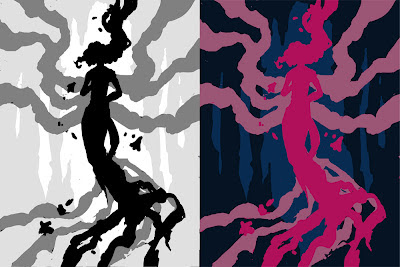eu·re·ka [yoo-ree-kuh, yuh-]
( initial capital letter ) I have found (it): the reputed exclamation of Archimedes when, after long study, he discovered a method of detecting the amount of alloy mixed with the gold in the crown of the king of Syracuse.
What is a ‘Eureka Moment’?
It’s that moment when you’re trying to understand a complex concept where a particular bit of information is presented that suddenly makes all of the elements you didn’t understand before click together to make sense.
We all learn in different ways. There’s nothing like returning to my fundamental studies in anatomy in the past month to really drive this point home. You can explain to me a billion times about the pelvic furrow or the angle of a joint’s rotation, but I am a very visual kinesthetic learner, meaning I have to learn by doing, which means things often don’t make sense to me till after I perform many learning exercises to explore a concept.
My latest ‘Eureka Moment’ occurred while reading issue #80 of ImagineFX magazine. Many of you may think this magazine is only for digital artists, but they cover plenty of topics and offer many tools that would be useful to all artists, such as articles on color theory, features of classical illustrators, and reference photo collections on the accompanying CD.
It was one such article on analyzing composition by Dan Dos Santos that led to my recent ‘moment’. Considering Dos Santos’ track record of gorgeous book covers featuring one or two characters, I knew he would have plenty to say on the matter! It’s tough to make a book cover really pop with just one character to work with. You have to catch the reader’s interest, visually and story-wise. A single image has to have enough punch to make you want to learn more!
The article covers, among other things, a simple exercise you can do to break down your composition involving greyscale layers to indicate foreground, middleground, and background. I thought I’d try it on my latest piece, Persephone Queen of the Underworld:
The Results:
Converting the image to simple shapes allowed me to get a better sense of how it was reading visually. I discovered by doing this that while there is a nice vertical spiral throughout the composition, the bottom where her dress trails off is just a tad too busy and cuts off abruptly. The dress ‘tendrils’ on the left side flowing out from her back also create an awkward silhouette that is disharmonious with the shapes created by the adjacent ‘tendrils’.
I also found that the relatively flat background is not creating enough narrative or visual interest in this piece. Visually, it falls flat of framing the figure and gives us no information about her setting or story. I asked myself ‘How many people would know this is Persephone or some kind of underworld figure if I hadn’t said so in the title?” Originally, I wanted to keep this area simple because the flowers, swirls, and figure would be made too busy by anything more complicated than a void, but now that I ask myself the tough questions, it’s just not telling enough of her story!
Next, I tweaked with the layers of the background planes to see what I could do to create more harmony and visual interest. I then broke down the main planes into color groups, per Dos Santos’ suggestion to keep your color groups simple to create high contrast and visual interest:
The Results:
I found that by pushing the figure upwards, I could give the flow of her dress more room to terminate in a less abrupt way, which makes a more comfortable vertical flow for the viewer’s eye through her hair, down into the core of the figure, and down through the dress. She also has a delightful ‘tree’ shape to her now that fits well with her vegetation theme.
The energy swirl was removed, leaving the flowers to do the work of creating the spiral of energy around her, which I feel also works better to help solidify her symbolic connection to the blossoming of spring. The background plane was tightened up from a random void of energy to the mouth of a cave with rock formations which frame the figure and tell something of her current imprisonment in the Underworld.
Now, I’m preparing myself to dive back into this piece and really make her shine! Elements of the piece may still change in the doing, but I feel I have a much stronger idea after I’ve spent days staring at this painting and not knowing what exactly felt wrong about it.
I hope my Eureka Moment helps someone out there! If you’d like to read more on the topic of planning compositions, I highly recommend getting Issue #80 of Imagine FX and reading Dos Santos’ original article for more working examples and invaluable advice. There are more great articles included that helped me get inspired, including the brilliant compositions of Howard Pyle.






